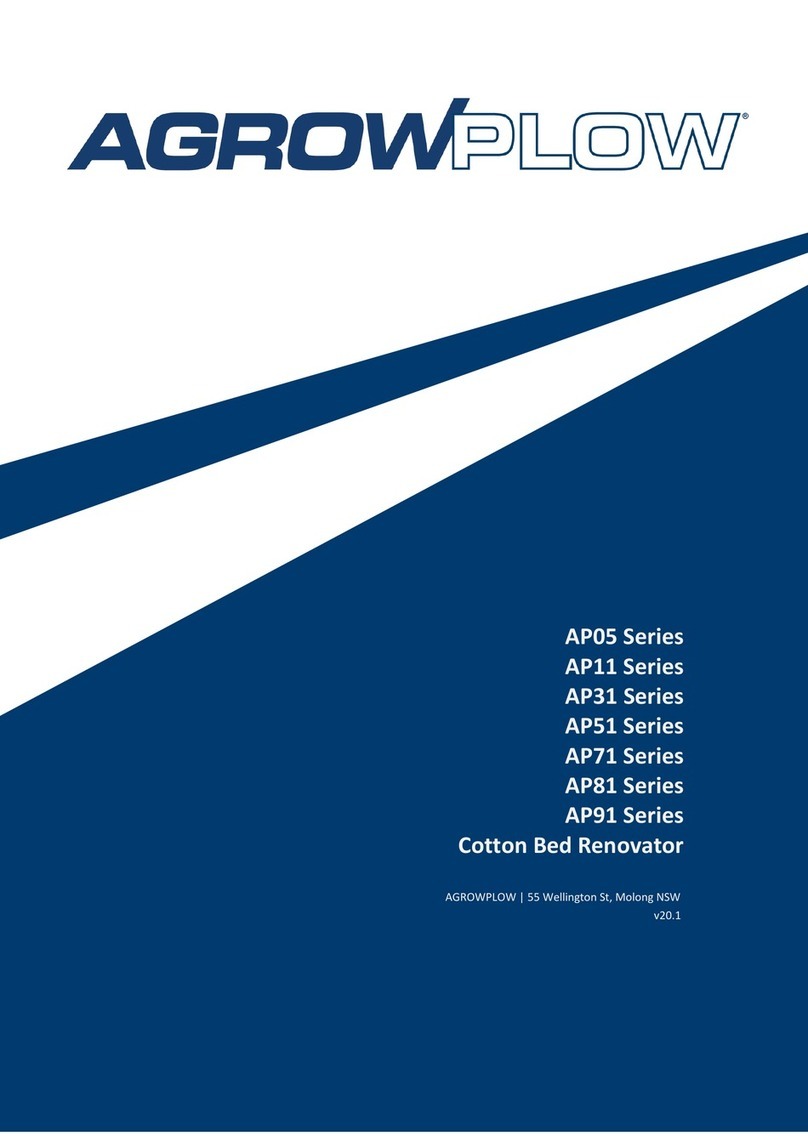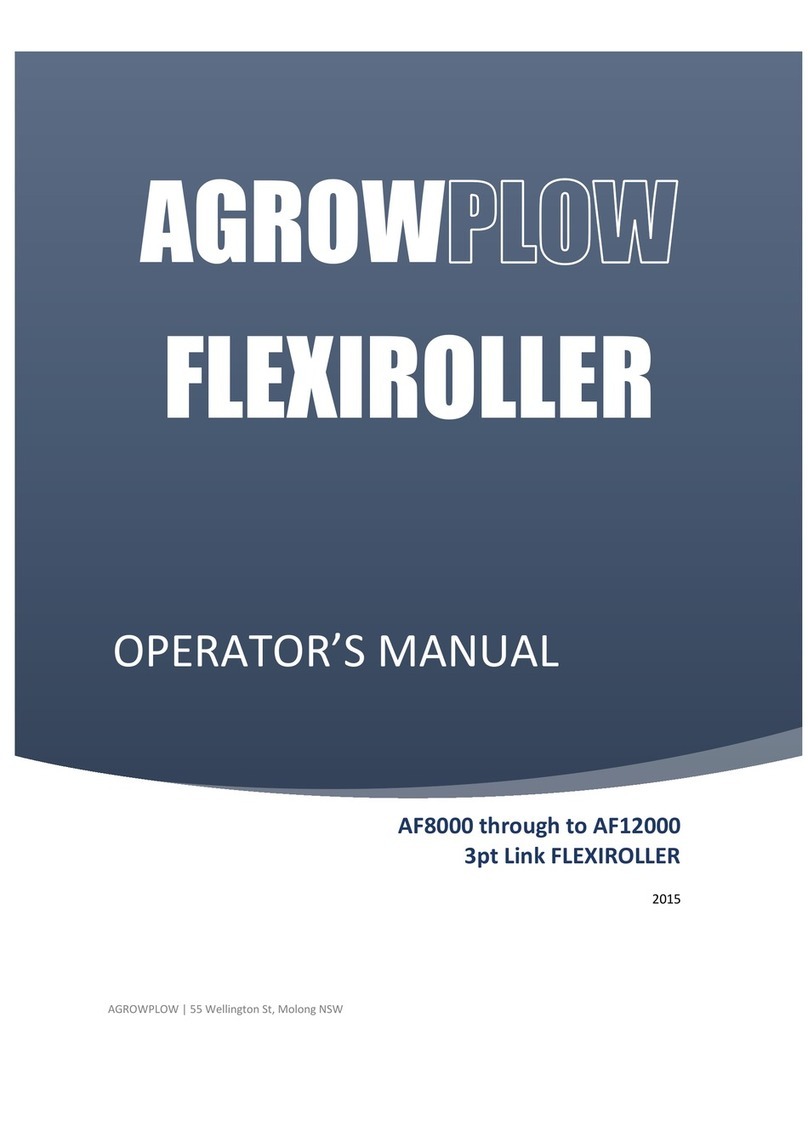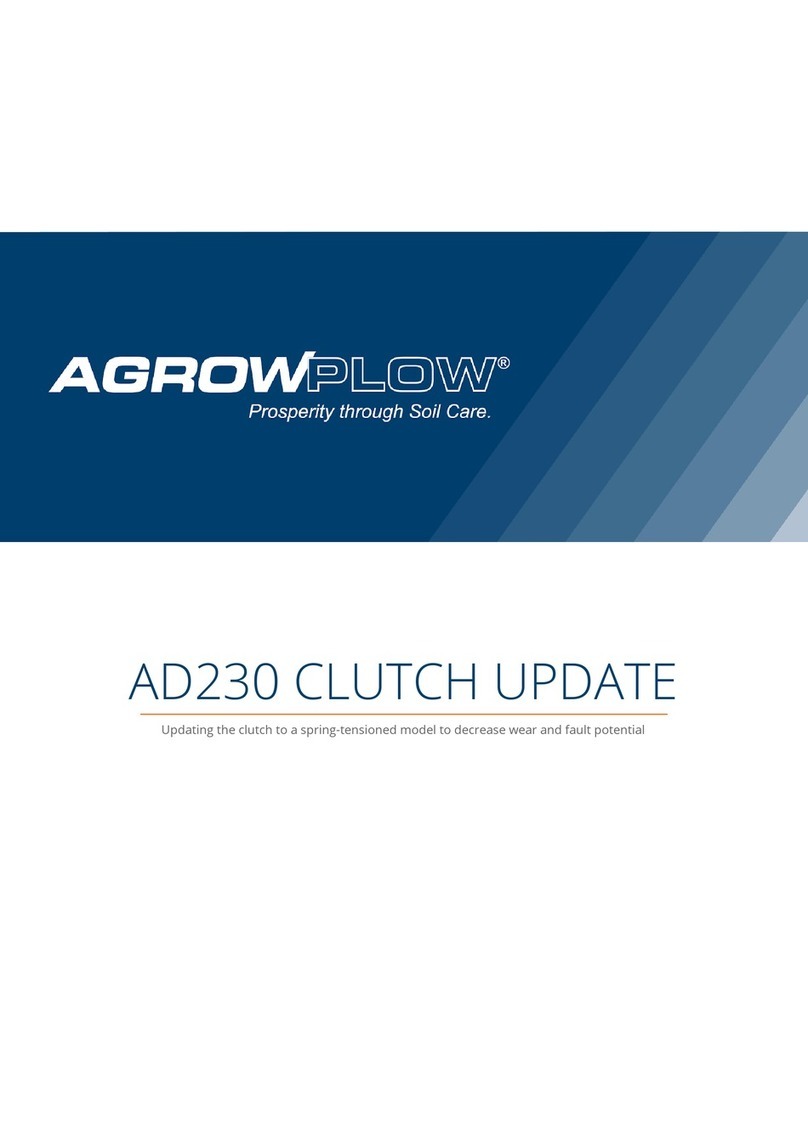
Agrowplow Operators Manual Page | 5
Contents
Contact Details ...................................................................................................................................................................2
Disclaimer...........................................................................................................................................................................3
The Owner’s Manual ..........................................................................................................................................................4
Delivery Inspection.........................................................................................................................................................4
Contents .............................................................................................................................................................................5
Agrowplow – Company Profile...........................................................................................................................................7
Warranty Policy ..................................................................................................................................................................8
Conditions of Warranty..................................................................................................................................................8
Completing Safe Use Instruction (SUI) & Pre Delivery Inspection (PDI) Reports .........................................................10
1. Safety........................................................................................................................................................................11
1.1. Shared Responsibility for Safety......................................................................................................................11
1.2. Safe Operation.................................................................................................................................................12
1.3. Warning Decals................................................................................................................................................13
1.4. Ergonomic Safety.............................................................................................................................................21
1.5. Maintenance....................................................................................................................................................23
1.6. Transporting the Machine ...............................................................................................................................24
1.7. Un-Hitching the Machine.................................................................................................................................24
1.8. Risk assessment ...............................................................................................................................................25
2. Soil Care System of Farming.....................................................................................................................................27
2.1. Soil Degradation ..............................................................................................................................................27
2.2. The Solution.....................................................................................................................................................27
2.3. Soil Compaction...............................................................................................................................................28
2.4. Advantages of Agrowplowing..........................................................................................................................29
2.5. Benefits of Direct Drilling.................................................................................................................................32
2.6. Features of the Agrowdrill...............................................................................................................................32
2.7. Advantages of the Baker Boot .........................................................................................................................33
2.8. Planning to Direct Drill.....................................................................................................................................34
2.9. The Job’s not finished at seeding! ...................................................................................................................36
3. Specifications............................................................................................................................................................38
3.1. AD082, Agrowseeder.......................................................................................................................................38
3.2. AD120 Series Agrowdrill ..................................................................................................................................39
3.3. Ad320 Series Agrowdrill ..................................................................................................................................40
3.4. AD720 Series Agrowdrill ..................................................................................................................................41
4. Farmscan Jackal Hectaremeter ................................................................................................................................42
4.1. Troubleshooting the Hectaremeter.................................................................................................................42
5. Operating Instructions..............................................................................................................................................43
5.1. Hitching and Levelling......................................................................................................................................43
5.2. HydraDisc Undercarriage - AD 820 Only..........................................................................................................46
5.3. Seeding Depth .................................................................................................................................................46






























